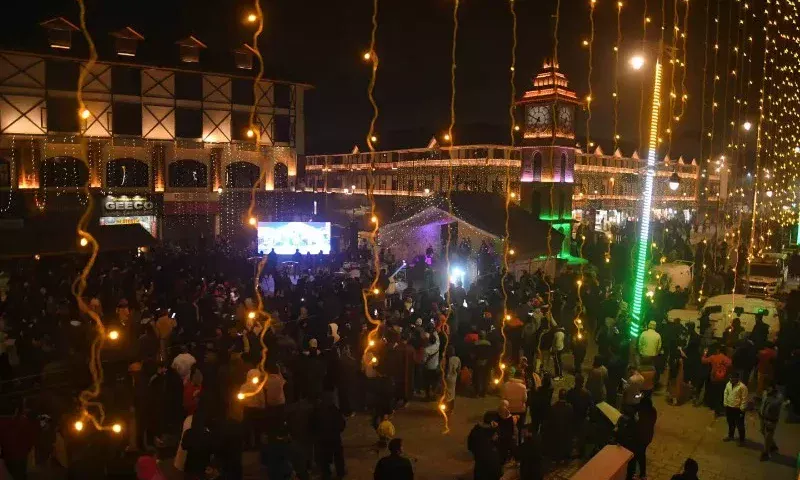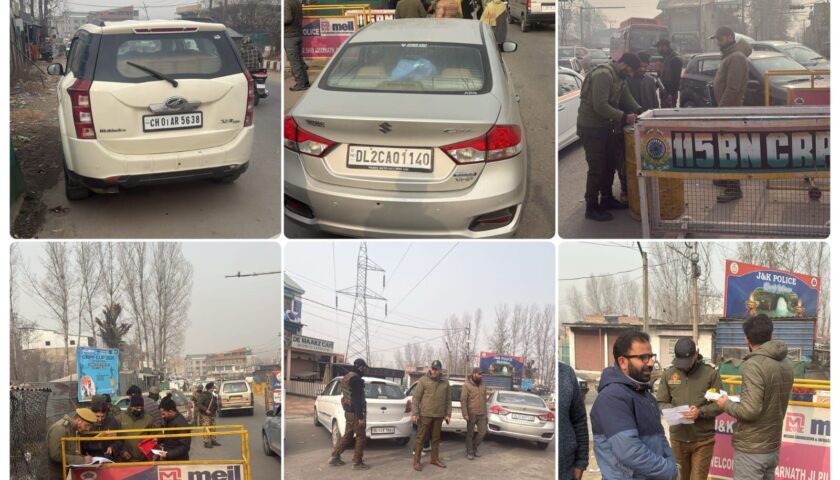Kashmir’s Youth at a Crossroads: Navigating Pressures, Conflicts, and the Path Forward
By: Javid Amin
The Kashmir Valley, celebrated for its breathtaking landscapes, has also become the stage for countless social and political conflicts that deeply impact its young generation. This has given rise to a challenging and complex environment for the youth in the region, who are increasingly grappling with economic, social, and psychological pressures. Recent incidents, such as the violent altercation near SP College in Srinagar, where a youth was reportedly stabbed in a “love triangle” dispute, shed light on underlying issues, raising concerns about the direction in which Kashmiri youth are headed.
While it might seem that this was an isolated incident, the reality is that it forms part of a larger social dilemma in Kashmir—one involving mental health struggles, identity crises, and a lack of constructive avenues for emotional and professional growth. This article delves into the factors shaping the experiences of Kashmiri youth today, examining why cases of violence and personal strife are escalating and what steps could help in transforming the region’s social fabric for a brighter future.
Kashmir’s Changing Social Landscape: Rising Pressures Among Youth
In recent years, Kashmir has undergone significant social changes, brought on by technological advancements, global connectivity, and changes in traditional family structures. For a region already marred by political instability, these changes have further compounded pressures on its youth. Many young people in Kashmir struggle with a heightened sense of competition, isolation, and often limited prospects for higher education and professional success within the Valley.
This evolving social landscape has led to increased challenges, such as:
- Mental Health Pressures: Political unrest, economic hardship, and social issues contribute to a growing mental health crisis among Kashmiri youth. Anxiety, depression, and feelings of isolation are prevalent, exacerbated by a lack of mental health resources and cultural stigmas surrounding therapy or counseling.
- Social Media Influence and Escalating Comparisons: Social media has created a platform where young people are constantly exposed to an idealized version of life outside the Valley. This has heightened feelings of envy, dissatisfaction, and competition. Instances of personal conflict, including cases like the recent stabbing incident, may partly stem from the comparisons and insecurities fueled by digital interactions.
- Economic Stagnation and Limited Opportunities: With limited avenues for stable employment and career growth, many young people feel trapped in a cycle of unfulfilled aspirations. Economic stagnation has pushed some youth towards frustration and in some cases, into undesirable activities as they seek any means to secure a livelihood.
- Identity Conflicts and Cultural Displacement: Many young Kashmiris find themselves caught between modern influences and traditional values, causing identity struggles. Balancing aspirations for freedom and individuality with cultural expectations has led to a form of generational dissonance. For some, this results in conflicts that spill over into social and personal interactions.
- Increasing Personal Conflicts and Social Fragmentation: As shown in the SP College incident, interpersonal disputes among youth are not uncommon. A mixture of emotional struggles, limited conflict-resolution resources, and pressures from social and cultural expectations can contribute to such altercations.
Case Spotlight: Understanding the SP College Incident and its Implications
The recent incident near SP College in Srinagar, involving a stabbing related to a romantic dispute, reveals the broader issues at play. Momin Riyaz, a young student, was reportedly attacked by his girlfriend’s ex-boyfriend, allegedly driven by jealousy and resentment. This incident highlights not only the personal conflicts arising from strained relationships but also a lack of healthy outlets for young people to process emotions and grievances. When young people face feelings of inadequacy or jealousy, without proper emotional guidance, these feelings can unfortunately escalate into violence.
The incident raises questions about how youth in Kashmir are coping with interpersonal issues and whether they have adequate support systems to guide them in healthy ways. Furthermore, it underscores a lack of recreational and developmental outlets—places where young people can channel their emotions and energies constructively, away from conflict and aggression.
Impact of Cultural and Parental Expectations on Kashmiri Youth
In Kashmir, traditional values still play a prominent role in the lives of young people, with family and cultural expectations shaping decisions around education, career, and relationships. However, as they gain more exposure to global ideas and lifestyles, young people are beginning to desire freedoms that often conflict with conservative expectations. Parents, while rooted in traditional beliefs, sometimes struggle to understand the aspirations of their children, resulting in generational conflicts and feelings of alienation among youth.
These cultural expectations can also contribute to interpersonal conflicts and lead to strained relationships. When young people feel unable to express their identities freely, they may resort to secrecy or rebellion, which can result in misunderstandings, disappointments, and eventually conflicts, such as those witnessed in cases like the SP College stabbing.
The Role of Education and Community in Empowering Kashmiri Youth
Education in Kashmir faces unique challenges, as political unrest often leads to school and university closures. However, when education is accessible, it serves as a powerful tool in empowering young people. Educational institutions can provide safe spaces for learning, growth, and self-discovery, helping students build self-confidence and resilience. They can also serve as platforms for conflict resolution, offering counseling services, peer support groups, and activities that encourage empathy, understanding, and open communication.
Community initiatives, too, play a vital role in shaping young minds and providing constructive outlets for youth. By engaging in local arts, sports, or vocational training programs, young people in Kashmir can develop skills, find purpose, and build social networks that help prevent feelings of isolation or frustration.
Building a Supportive Environment: What Can Be Done?
Addressing the issues facing Kashmir’s youth requires concerted efforts from all sectors—family, education, community, and government. Some steps that could help include:
- Mental Health Awareness and Access: Increasing access to mental health resources, including counseling centers and helplines, could provide young people with the support they need. Raising awareness about mental health could also reduce stigma, making it easier for youth to seek help.
- Conflict-Resolution Programs: Schools, colleges, and community centers could introduce programs that teach conflict-resolution skills, equipping young people with the tools to handle personal disputes in constructive ways.
- Youth Engagement and Skill Development Programs: Offering workshops, internships, and community projects could provide Kashmiri youth with career-oriented skills, giving them a sense of purpose and direction. This also includes promoting sports and arts, which can provide a healthy outlet for emotions and energy.
- Parental Guidance and Workshops: Workshops for parents can bridge the gap between traditional expectations and the changing aspirations of youth. Helping parents understand the needs of the younger generation could foster healthier family relationships, reduce generational conflicts, and provide youth with a stronger support system.
- Improved Educational Access and Resources: More investment in educational infrastructure and resources would help ensure that Kashmiri youth have access to uninterrupted learning. Schools and universities can also implement counseling and career guidance services to support students as they navigate personal and professional challenges.
Moving Forward: Empowering Kashmir’s Next Generation
The journey for Kashmir’s youth may be challenging, but it is far from hopeless. By fostering an environment that encourages open dialogue, mental well-being, and skill development, the region can help young people overcome the hurdles they face today. With the right support, young Kashmiris have the potential to channel their aspirations and energy into positive change for themselves and their communities.
Incidents like the recent conflict near SP College, while troubling, can serve as critical reminders of the urgency to address the root issues affecting Kashmiri youth. By creating safe spaces, building healthy community initiatives, and bridging generational divides, Kashmir can look towards a brighter future where its young people thrive and contribute to the region’s prosperity.




